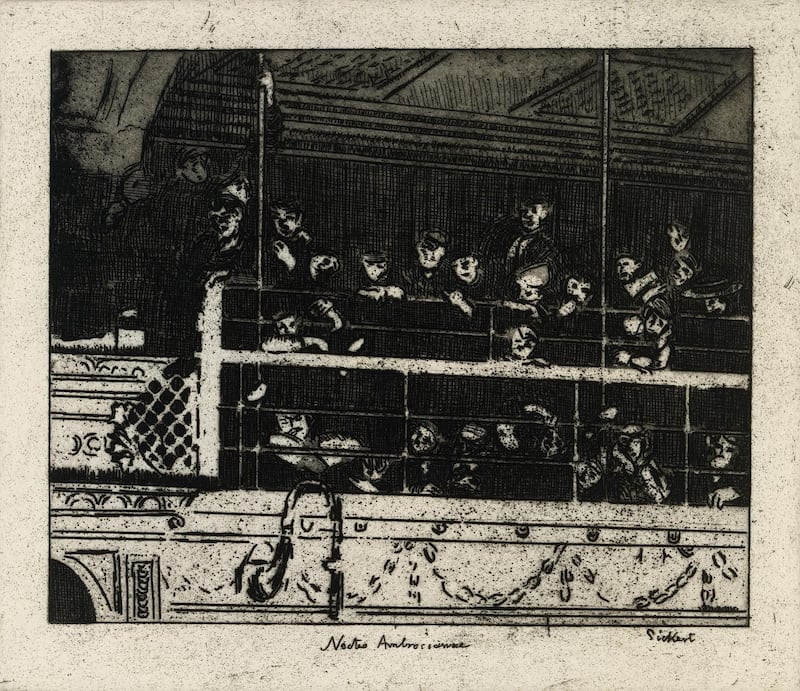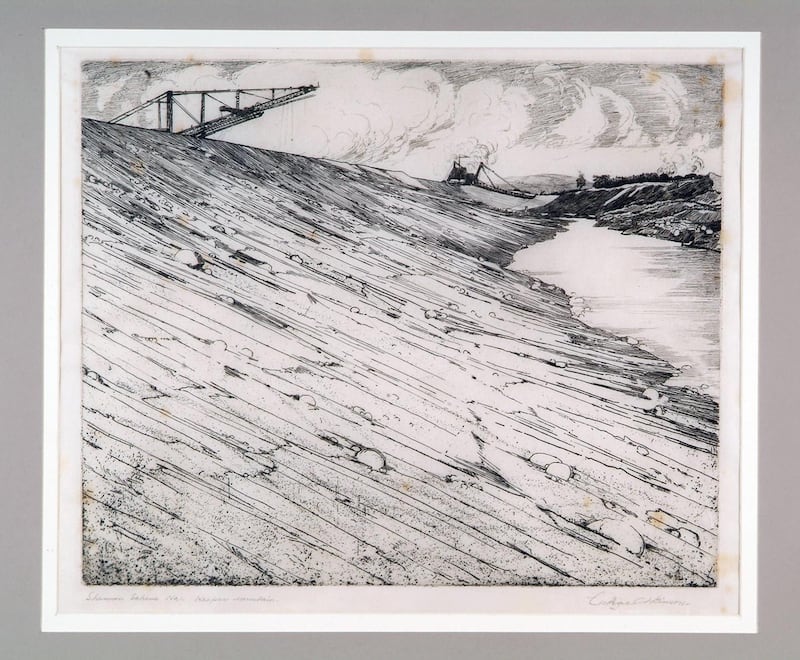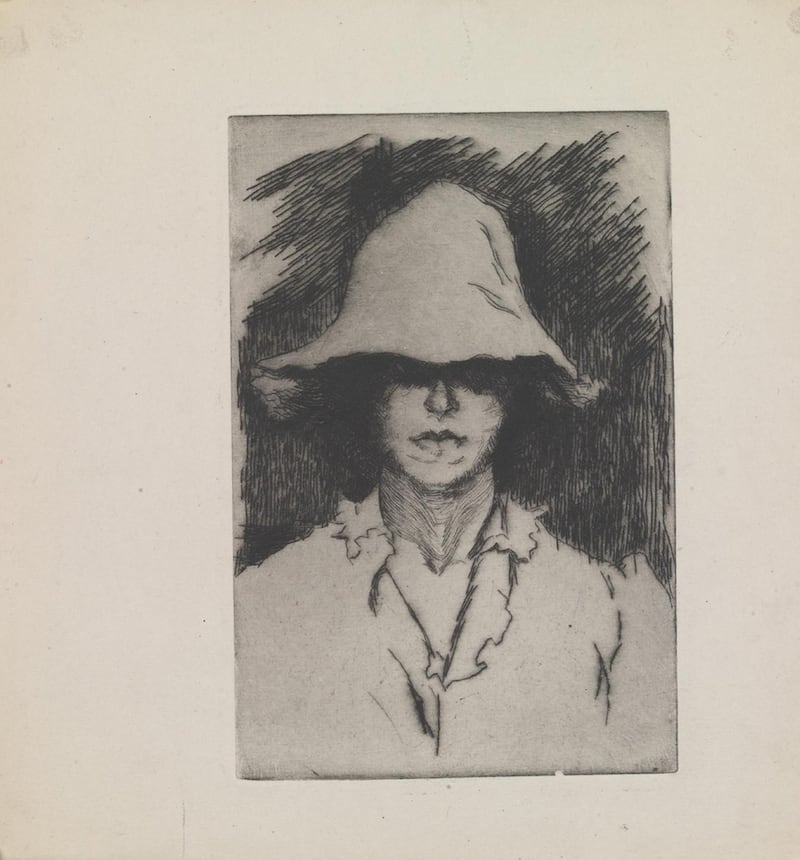Making Their Mark ★★★★☆
Print Gallery, National Gallery of Ireland, Merrion Square West/Clare Street, Dublin
Last year the Print Gallery in the National Gallery of Ireland, already an impressive and valued facility, was quietly upgraded to enhance both visitor experience and the conservation of the works on view. Prints and Drawings curator Ann Hodge notes in her introduction to Making Their Mark that a Belgium-based company provided new viewing cases, fronted by non-reflective, UV-filtered glass, with LED lighting, all of which make visiting the gallery a pleasure. The beauty of the Print Gallery since it first opened in 1996 is that it allows visitors the closest possible contact with the work, in a quiet, personal context quite unlike the spectator sport with selfies that has become the dominant mode of museum-visiting.

Hodge co-curated Making Their Mark with TCD’s Angela Griffith. The subtitle is Irish Painter-Etchers & the Etching Revival, and the show highlights an aspect of the work of some of the Irish artists who studied and worked in Europe towards the end of the 19th century and into early modernism. The revival referred to relates to the flowering of etching as a fine art medium at the time. Not that there was any lack of great historical exemplars of artist-printmakers – Durer, Rembrandt, Goya, Blake, for example – but the preponderance of print production had long been devoted to the reproduction of, usually, original paintings. This was about etchings as works of art in themselves. Perhaps predictably, the revivalists could be unduly dogmatic about what an etching should be – eschewing painterly effects and emphasising monochromatic, linear method, for example.
Industrious and gifted
One of the favoured revivalists was Whistler, an industrious and gifted printmaker, and a couple of his etchings (from the Hunterian in Glasgow), together with pieces by Séguin, Legros and Sickert, are included to contextualise the Irish works. Roderic O’Conor features among the Irish artists, though his etchings, made during one relatively brief period, under the eye of Séguin, and using zinc rather than copper plates, are a little heavy-handed – as he could be. Apart from being a painter of major significance in Irish art history, Estella Solomons was an important and productive printmaker. She is generally acknowledged as such, yet is still probably underestimated in every respect.

The show’s real revelations, in terms of Irish artists, lie elsewhere. Hodge and Griffith note that, while O’Conor and Solomons are relatively familiar names, (as is John Lavery, whose only, finely worked etching was acquired by the gallery just last year), several accomplished etchers have largely disappeared from view over time. They include a cousin of JM Synge, Edward Millington Synge (a very capable etcher), Wexford-born though largely London-based Myra Hughes, two ex-army officers, Robert Goff and Edward Lawrenson, Sarah Harrison, Percy Gethin (a friend of Lady Gregory, AE et al), Francis Walker and Cork-born George Atkinson.
Two examples of the latter’s work based on the Shannon hydro-electric scheme are included, from the collection of Cork’s Crawford Gallery, and they are very impressive, offering quite a different take on the arrival of technology in rural Ireland than Sean Keating’s well-known paintings of the project. Atkinson’s other works are also noteworthy, as is Gethin’s minimally stated landscape, Peat Bog. There seemed to exist a mutual wariness between the self-taught Lawrenson and the revivalists, as he embraced coloured aquatint, flouting the doctrine of black-and-white line.
Glass workshop
He did so rather brilliantly, though. Three of the four included pieces by him are from the British Museum, and in themselves merit a visit to the exhibition. One is quite extraordinary. The Dublin Bottlemakers, made in 1903, has as its subject the interior of a glass workshop in Ringsend. It is a subtle arrangement of hot ochres that merits close attention and reveals more and more detail the longer you look at it – an ideal candidate for the Print Gallery. Equally striking, if more overtly dramatic, is his study of Songefjord, Norway’s deepest fjord. Both these exceptional prints are technically impressive and curiously timeless.

In 1912, Sarah Harrison was the first woman to be elected as a Dublin city councillor. She had been central to the founding of the Municipal Gallery of Modern Art in 1908 and gave her etching, Study of a Man’s Head, to the gallery. It’s technically polished, if curiously inert, and there is a suggestion that it may have been a student exercise. Well established as a printmaker, Myra Hughes was based in London but was only 40 when she died in 1918. It’s thought probable that Solomons visited her show of etchings of urban subjects in Dublin in 1910. Solomons’ visit to a major Rembrandt exhibition in Amsterdam in 2006 is assumed to have sparked her interest in etching, which makes sense when you look at the work she went on to make. Hilary Pyle has also suggested Rembrandt influenced her approach to portraiture.
In any case, as with everything she did, Solomons was fluent and immediate in her etchings, naturally capable but never hung up on questions of technique. The show includes a gently self-deprecating self-portrait in which she’s wearing a sun hat, so that her eyes disappear entirely into shadow, and a beautiful portrait etching of her by Frida Perrott.
Making Their Mark draws on recent research work and makes an important contribution to fleshing out an important period of Irish art history, a period perhaps too often viewed primarily in terms of modernist versus conservative, or in the context of emergent nationalism.













